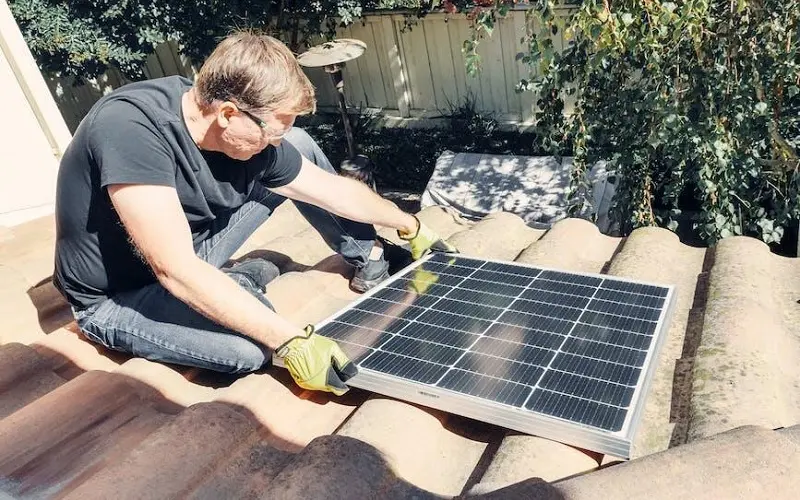Are you tired of high energy bills and wasting resources?
It’s time to explore energy efficiency solutions that can save you money and help the planet. Whether you’re looking to make simple changes at home or implement strategies at work, there are plenty of ways to reduce energy consumption without sacrificing comfort.
In this guide, we’ll show you practical, easy-to-follow solutions that can make a big difference. Let’s start making smarter energy choices today!
Key Energy Efficiency Solutions
Energy efficiency solutions help reduce energy consumption, lower utility bills, and decrease environmental impacts. Below are key solutions:
Home Insulation
The temperature in your home stays fixed if you have the right insulation. During the winter, it keeps heat inside and cool air inside during the summer. If you don’t insulate your home well enough, you will lose energy and have to use more energy to heat and cool it.
There are various kinds of materials that can be used for insulation. Fiberglass, cellulose, and spray foam are some popular ones. Picking the right type for your home can help it use less energy because they are all different in how well they work.
Energy-Efficient HVAC Systems
HVAC systems are essential for heating and cooling your home. However, older systems can use a lot of energy, making them inefficient. Upgrading to an ENERGY STAR-rated system can reduce energy use while still providing comfort.
Energy-efficient HVAC systems are designed to consume less power. They are made to run more smoothly and provide better temperature control. This leads to lower energy bills and less impact on the environment.
Smart Home Technologies
Smart heaters make it easier to keep your home at the right temperature. They get to know your habits and change the settings based on whether you’re home or not. They can be controlled from afar, which saves energy when you’re not there.
With smart lighting systems, you can use your phone or voice to play with the lights. They can be set to turn off when not in use, which saves energy. Smart tools also help because they can change their settings based on your needs and your goals for saving energy.
Advanced Energy Efficiency Technologies
As energy demands continue to grow, advanced energy efficiency technologies are emerging to optimize energy use, reduce waste, and enhance sustainability. Below is a detailed breakdown of some key advanced energy efficiency technologies:
LED Lighting Solutions
LED lighting is an energy-efficient option for illuminating homes and businesses. They use less energy than traditional lighting systems and have a long lifespan. LEDs provide bright, clear light immediately after being switched on, unlike some other light sources.
Using LEDs can significantly reduce electricity consumption. This makes them a popular choice for both residential and commercial lighting needs.
Building Automation Systems (BAS)
Building Automation Systems control the mechanical and electrical equipment in a building. These systems include HVAC, lighting, security, and fire protection. BAS help optimize energy use by adjusting settings based on real-time data and schedules.
A BAS can improve comfort and efficiency in buildings. It also allows remote monitoring and control of systems.
Power Factor Correction (PFC)
Power Factor Correction helps improve the efficiency of electrical systems. It reduces the waste of energy by correcting the phase difference between voltage and current. PFC helps to ensure that electrical power is used more effectively.
Correcting power factor can lower energy costs and prevent damage to equipment. It is especially useful for industries with large electrical systems.
Renewable Energy Integration
Adding clean, long-lasting energy sources to the energy grid that is already there is called renewable energy integration. These sustainable solutions can change the energy environment and help us become less dependent on fossil fuels.
Solar Power Solutions
Solar power is a renewable energy source that uses sunlight to generate electricity. Solar panels, also known as photovoltaic (PV) systems, are installed on rooftops or in open areas to capture sunlight and convert it into usable energy. This energy can then be used to power homes, businesses, or sent to the grid.
Solar energy has become more affordable and efficient in recent years. Modern solar panel solutions can convert a higher percentage of sunlight into electricity than older models. Solar systems can be installed on small residential buildings or large commercial properties, depending on energy needs and available space.
Microgrid Systems
A microgrid is a small, limited energy system that can work without the main power grid. To get power, they use both green energy sources, like solar or wind power, and energy storage systems. Microgrids are made to be reliable, so they can keep giving power even when the power goes out or when demand is high.
Microgrids can be linked to the main grid so that energy can be swapped out when needed. They can also work on their own, giving power to nearby places without needing to connect to the main grid. This makes them useful in places that are far away or prone to disasters and where the regular plan might not work.
Practical Tips for Implementation
When implementing energy-efficient solutions, start by assessing your current energy consumption. Identify the areas in your home or business where improvements can be made. Small changes, such as switching to LED bulbs or using energy-efficient appliances, can make a noticeable difference over time.
For more significant changes, consider investing in renewable energy solutions like solar panels. Elevating your home with solar panels can reduce your reliance on grid electricity and lower energy costs. Always look into available incentives, rebates, or tax credits to help make the initial investment more affordable.
Discover Smarter Ways To Live With Innovative Energy Efficiency Solutions
Adopting energy efficiency solutions is a practical step toward reducing our environmental impact and cutting costs. By making smarter choices in our homes, businesses, and transportation, we can all contribute to a more sustainable future. Small changes can lead to big results when it comes to saving energy.
Together, we have the power to make a significant difference. Each effort, no matter how small, brings us closer to a more energy-conscious world.
Was this article helpful to you? If so, make sure to check out our blog for more useful information and resources.




No Comment! Be the first one.